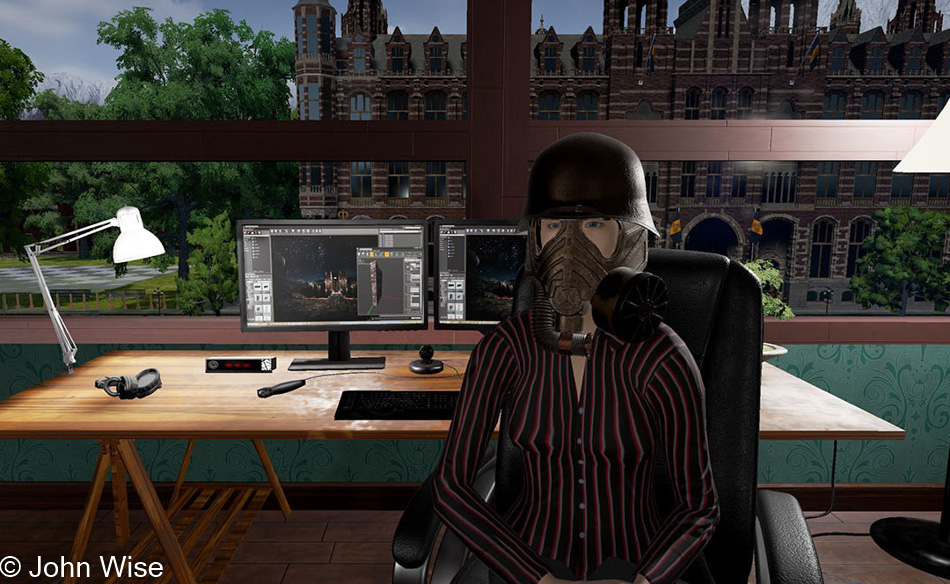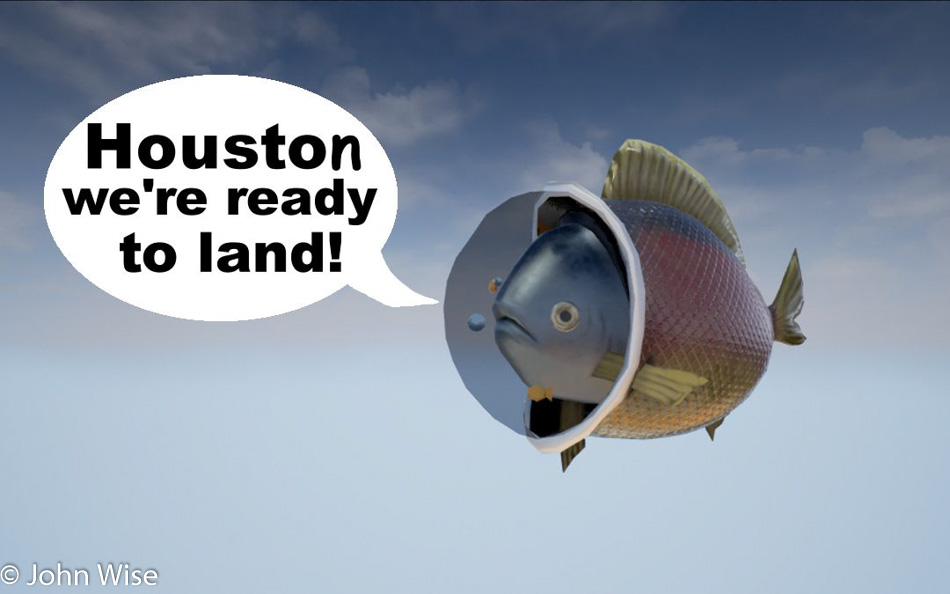
Over a year ago, we made the decision to use Blender as our primary 3D modeling and animation tool; you can read more about that here.
Today, I’ll go over some of the other factors that influenced this choice. First and foremost, the software is free. It also has the support of both Epic and Valve (important if you are a game/VR developer). Finally, it is very well-positioned for use in scientific visualization. And it is here that things can get into the weeds but are also very exciting for the scientifically inclined.
I have found over a dozen add-ons that extend and facilitate using Blender in some highly technical ways, as though 3D software wasn’t difficult enough. An “add-on” for Blender can also be seen as a plugin, a 3rd party application that hooks into the host software to deliver greater capability.
Three of these add-ons rise to the top of my list due to their ability to help Timefire build assets for our game Hypatia.
Sverchok is a procedural architecture tool that allows us to replicate forms where repetition would slow us down to a snail’s pace if we were forced to build every piece manually. Renowned architect Zaha Hadid is an expert in the field of this style of architecture, and while I have no idea what tools she uses, we can thank some programmers from Russia for giving the world this free add-on to allow all of us to explore and experiment with procedural architecture.
Animation Nodes is an add-on from Germany, with the generous support of others from around the globe, which is also free. This complex set of nodal-based tools gives the animator the power of procedural animation. An example use case for this is to animate 1000 similar on-screen objects. The artist controls the objects using node-based parameters and functions that are able to be assigned specific numeric and mathematical attributes. Repetitive tasks are thus reduced to understanding the flow of sequences that can be used to achieve the desired result of moving the objects along, say, a particular arc.
Tissue is more of an artist’s experimental friend as it relates to computational design. Originating from Italy, the add-on allows one to perform magic, or so it appears. Starting with a base mesh, the add-on “Tessellates” your objects into works of amazingly intricate works of art.
Now, on to the more esoteric add-ons. You’d better fasten your seat belt.
Whether you are studying brain sciences, atomic structures, biology, or computational fluid dynamics, there is an add-on for you. But let’s be serious: if you are a parent reading this, what is the likelihood you’ll up and decide to create some glycogen analysis visualizations? Your kids, though, should be encouraged to start learning some of these tools because multi-disciplinary education and broad knowledge are shaping up to be part of what is considered essential workplace skills. Plus, the tools are free.
To go into details about what the specific tools do would certainly weigh this blog entry down, maybe even sink it, but I will offer a hint of things.
There is BioBlender, another add-on from Italy. BioBlender provides the tools for exploring and visualizing biological molecules.
NeuroMorph is just the right gift for anyone interested in the morphometric analysis and visualization of 3D models created from electron microscopy image stacks – it, too is FREE!
Combine that with the add-on for creating dendritic structures with the aforementioned glycogen add-on, and your precocious 10-year-old will be performing Ph.D.-level brain analysis in no time.
There is also an Atomic clustering add-on, a protein data bank reader, and a tool for running building simulations so one can see how heat and air conditioning move through a structure. Maybe you are more interested in parametric anatomical modeling? There’s an add-on for that, too; it’s called PAM.
Finally, the folks at Oak Ridge National Laboratory are able to run Blender on a 300,000-core Jaguar Supercomputer. If you are thinking that $104 million for a computer is too rich for your wallet, you could always opt for the Nvidia Digits DevBox, but I’d wait for next year’s Pascal-based unit if I were you.
Oh, I almost forgot to tell you about the Gwyddion add-on for importing Scanning Probe Microscopy files.
Image courtesy of Computational Design Italy




